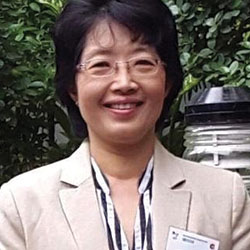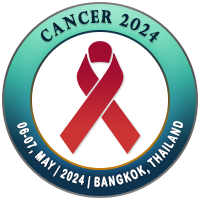
Myint Myint Thinn
Central Women’s Hospital, MyanmarTitle: Accuracy of high risk HPV DNA genotyping, cytology and VIA as the triage strategy for HPV positive women in cervical cancer screening
Abstract
Introduction: Cervical cancer screening has evolved, with Human papillomavirus (HPV) testing being considered the primary screening tool. However, this can lead to over-treatment due to transient infections. To address this issue, various triage tests have been investigated.
Objectives: The study aimed to determine the rate of abnormal triage results using HPV genotyping, cytology, and VIA in HPV-positive women. Moreover, it assessed the diagnostic accuracy of these methods in detecting precancerous cervical lesions.
Methodology: A comparative study was conducted at the Yangon Central Women's Hospital's cervical cancer screening clinic. Women aged 30 to 49, who tested positive for HPV with careHPV, were included. Samples for HPV genotyping and cytology were collected, followed by VIA testing. Colposcopy and biopsy were performed within one week to one month after the primary screening.
Results: Out of 169 HPV-positive women, 34.3% had CIN I+ lesions, and 16% had high-grade CIN II+ lesions. Cytology triage using the LSIL threshold yielded 42.6% positive results, with 59.3% sensitivity, 60.6% specificity, and 60.35% accuracy in detecting CIN II+ lesions.
VIA triage resulted in 48.5% positive lesions, and 30.48% of these cases had CIN II+ lesions. VIA showed a sensitivity of 92.6%, specificity of 59.9%, and an accuracy of 65.1% for CIN II+ detection.
Among 169 CareHPV positive cases, 105 (62.1%) were HPV 16 or 18 positive whereas 43 (25.4%) had other high risk HPV infection. The diagnostic accuracy of HPV 16 or 18 positivity for CIN II+ detection was 74.1% sensitivity, 40.1% specificity, and 45.6% accuracy.
Conclusion: The study suggests that VIA testing is more accurate and cost-effective triage strategy for HPV-positive women in low- and middle-income countries (LMICs), particularly where access to advanced testing methods are limited. This finding has implications for improving cervical cancer screening, reducing unnecessary interventions as well as contributing to more efficient healthcare in resource-constrained settings.
Biography
Myint Myint Thinn has been practicing as a Senior Consultant Gynae-oncologist at Central Women’s Hospital, Yangon from 2013 onwards. Since then, she has been dealing with invasive cancers as well as running the screening clinic for cervical cancer. While she was working as WHO focal point for cervical cancer prevention and control program in Myanmar, she had tried and helped to develop the National Guideline on Secondary Prevention of cervical cancer which has been launched in October, 2018. She is also a member of guideline development group for update of WHO screening and treatment recommendations to prevent cervical cancer. She and her colleagues developed the Adapted Clinical Management Guideline for Invasive Cervical Cancer in collaboration with C/CAN in 2020.

